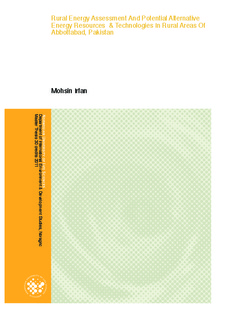| dc.description.abstract | This report provides an in-depth review and critical analysis of the various rural energy resources and their socio-economic, health and indoor environmental impacts on rural people and their livelihoods in Abbottabad, Pakistan. It also explores the potential alternative energy resources and affordable technologies for rural people and as well as their potential socio-economic, health and indoor environmental impacts on rural people and their livelihoods. The review of the consumption aspect has found that traditional fuel (fuelwood, crop residues and dung cake) still dominates domestic energy use in rural areas of Abbottabad and accounts for about 80% of the total. These resources of energy burn innefficiently, thereby giving rise to energy loss. The surrounding environment is also degraded through the depletion of forest resources and that in many areas there is an increasing shortage in firewood supply, which ultimately increases work burden for women whose responsibility, is to collect it. Energy is one of the most important inputs for sustaining people ́s livelihoods. Due to lack of modern energy services in Balolia village, rural people have less opportunities for income generation. Their low income levels makes the provision of modern energy services unaffordable for rural people. The resulting, heavily dependance on traditional fuels means less energy efficiency, over exploitation of forest resources, loss of biodiversity, greater health hazards due to indoor air pollution and reduce capacity to mitigate climate change. The analysis of the study show that the impacts on health of domestic fuel use go beyond indoor air pollution and affect the household economy, women ́s time and activities, gender roles and relations, safety and hygiene and as well as local and global environment. The energy situation in Balolia village is far worse than in the kakul village. They use traditional fuel in traditional stoves for cooking. Cooking is largely done by women inside the rooms. More than 50% of the domestic fuelwood collection is done by female members.The prefer cooking inside the room especially during winter because it performs dual function like cooking and as well as heating and also thinking that this practice reduces their household energy expenditures. Health situation is also worse in Balolia village. As compare to Balolia village, people of the Kakul village has clean, efficient and cheap energy resources for cooking and heating purposes. Moreover, socio-economic, health and hygienic conditions are also better than Balolia village. By exploring alternative energy resources and by introducing affordable, innovative energy technologies and technical assistance could bring socio-economic, health, hygienic and indoor environmental improvements for rural communities in Abbottabad, Pakistan. | no_NO |
